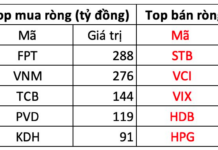In the context of Vietnam’s economy increasingly integrating deeply into the global economy, the development of the global value chain promotes deep international integration of the labor market, requiring Vietnamese workers to have vocational skills and working capacity to keep up with the development speed of countries in the region and in the world.
To better understand the importance, the current status of labor productivity of the Vietnamese economy, and the solutions that need to be implemented, TTXVN reporter interviewed Dr. Nguyen Bich Lam, an economic expert, former General Director of the General Statistics Office about this content.

Workers process shrimp products for export at the factory of Minh Phu Seafood Corporation (Ca Mau). Photo: Vu Sinh/TTXVN
Could you tell us the importance and current status of Vietnam’s labor productivity in the context of Vietnam’s economy increasingly integrating deeply into the global economy?
In the process of socio-economic development, labor productivity is a decisive factor to enhance the capacity and competitiveness of the economy. Improving and promoting labor productivity growth is a core issue for the Vietnamese economy at present. It is the shortest way to bring the economy to develop rapidly, sustainably, and catch up with the development level of countries in the region and in the world.
Within the globalizing and international economic integration context is increasingly deep, the fierce competition between economies. Only by improving labor productivity can a country stand firm, develop its economy quickly, and sustainably.
Looking back on the 2016-2020 period, labor productivity increased by 6.05% per year on average, higher than the average annual labor productivity growth rate of 4.53% in the 2011-2015 period, exceeding the target set forth in Resolution No. 05-NQ/TW, the 12th tenure. The average annual labor productivity growth is higher than 5.5%.
In the 2021-2025 period, in the three years of 2021-2023, the labor productivity growth rate was lower than the target adopted by the National Assembly annually. On average for the three years of 2021-2023, labor productivity increased by 4.3% per year, 2.5 percentage points lower than the target of the socio-economic plan for the 2021-2025 period and the 10-year socio-economic development strategy 2021-2030. To achieve the labor productivity target for the 2021-2025 period of 6.5%, labor productivity in 2024-2025 must increase by 9.8%.

A production line serving the electronics industry at Khvatec Thai Nguyen Co., Ltd. Photo: Tran Viet/TTXVN
Labor productivity reflects the efficiency of labor in creating GDP. The deep integration of Vietnam’s economy into the global economy requires what for the labor market? With the current status of Vietnam’s labor productivity, how do you assess the possibility of achieving the planned target for increasing labor productivity in 2024?
Labor productivity is a derivative indicator, calculated indirectly and depends largely on the results achieved by the Gross domestic product growth rate indicator. In fact, nowadays, with the process and technology used in production and business activities of the economy being backward; Restructuring of the entire economy and within the manufacturing industry are still slow; Trained labor force with diplomas and certificates, with skills, and expertise are still low.
In particular, in the context of Vietnam’s economy increasingly integrating deeply into the global economy, the development of the global value chain promotes deep international integration of the labor market, requiring Vietnamese workers to have vocational skills and working capacity in an international environment.
In that context, Vietnam must comply with common standards, including labor standards, modern labor market management standards according to international norms.
Currently, every year we propose an indicator: “The proportion of trained labor force” including both self-trained labor, self-improvement, without a degree or certificate, is this appropriate? What is the purpose of calculating this indicator? What benefits does it bring to managers?
I think we should only set targets and annually evaluate the implementation of the target through the indicator “Percentage of trained labor force with degrees and certificates”.
According to estimates, even if the GDP growth rate in 2024 reaches 6% – 6.5%, the average annual social labor productivity growth rate in 2024 will still find it difficult to achieve the plan target approved by the National Assembly and increase from 4.8% – 5.3%.

Automobile manufacturing at the factory of FORD Vietnam Co. (a joint venture between Ford Motor Corporation of the US and Diesel Son Cong Co.). Photo: Tran Viet/TTXVN
Sir, the labor productivity of the Vietnamese economy is still low, what are the reasons?
The low labor productivity of Vietnam’s economy is due to the fact that human resources still has many shortcomings, the labor force in the agricultural sector and the informal sector account for a high proportion of the total labor force of the entire economy, failing to meet the requirements of improving labor productivity and promoting socio-economic development.
Along with that, the labor structure by economic sector is still unreasonable, the proportion of trained labor with degrees and certificates is at a low level, the training structure is unreasonable, lacking highly skilled labor. Both the supply and demand sides have failed to meet the requirements of a modern, flexible, sustainable, and integrated labor market.
Not only that, we have not played the leading role of internal industry labor productivity; the labor productivity of the business sector is quite low; the application of technology and techniques in production and business activities is still limited, machinery, equipment, and technological processes are still backward.
In particular, the Government, ministries, sectors, localities and the entire political system have not yet had a correct awareness of the importance of labor productivity, have not urgently developed and implemented a medium- and long-term National strategy to improve labor productivity with breakthrough policies and solutions.
Could you tell us how localities across the country have been implementing vocational training programs for rural and informal workers?
Over the years, localities have paid attention to implementing vocational training programs for rural and informal workers. However, the training has been widespread, without orientation and training for enough indicators, regardless of quality or output for students, which has led to a lack of both supply and demand for labor. The percentage of laborers trained in the right profession is still low.
These shortcomings have led to a low proportion of workers, especially workers in rural areas, who are trained in suitable professions and have jobs. In addition, many young people and unskilled workers are not interested in vocational training.
Therefore, the proportion of trained labor force with degrees and certificates is low, not achieving the approved target. The problem of trained labor force with low degrees and certificates; the proportion of workers in agriculture and the informal sector is still high, putting great pressure on the creation of sustainable jobs and increasing labor productivity of the economy.

Yen Dung Clean Vegetable Cooperative is a pioneer in Bac Giang province in applying high technology and applying VietGAP





































